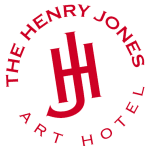Browse the collection of works currently on display via The Henry Jones Art Catalogue. Our online gallery catalogue has been designed to provide information about each artwork including artist information, artwork background and pricing. You can also speak directly to us about any work exhibited.
We are also registered for COLLECT, an Art Purchase Scheme offering Australian residents twelve-month interest-free loans to purchase artworks by contemporary Tasmanian artists from selected arts businesses across the state. It is an initiative of arts@work, the arts industry development unit of the Tasmanian Government.
Our Art Curator provides updates on new works and information on our artists via Art News. You can subscribe here.
Enquire Interest Free Loan